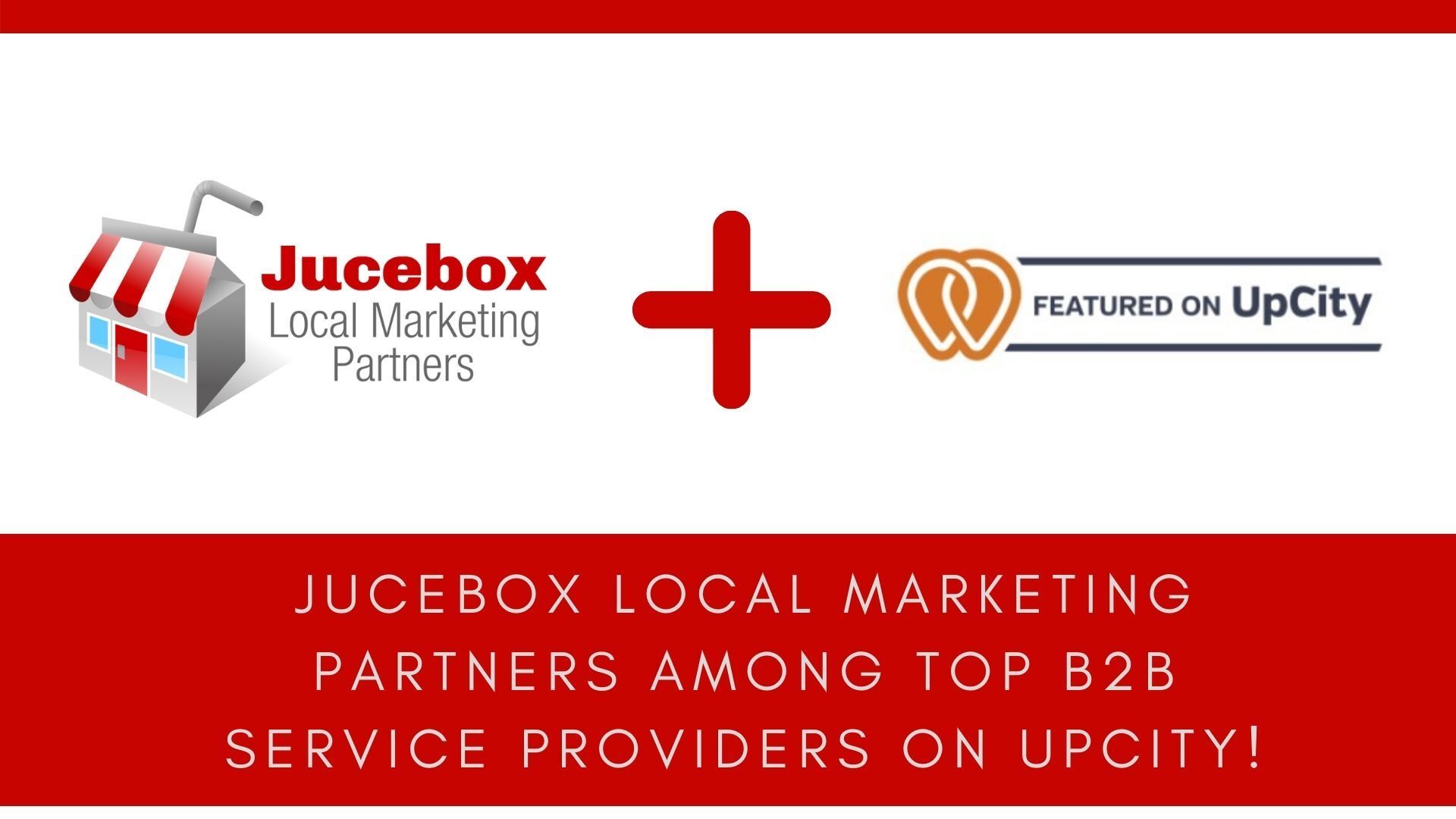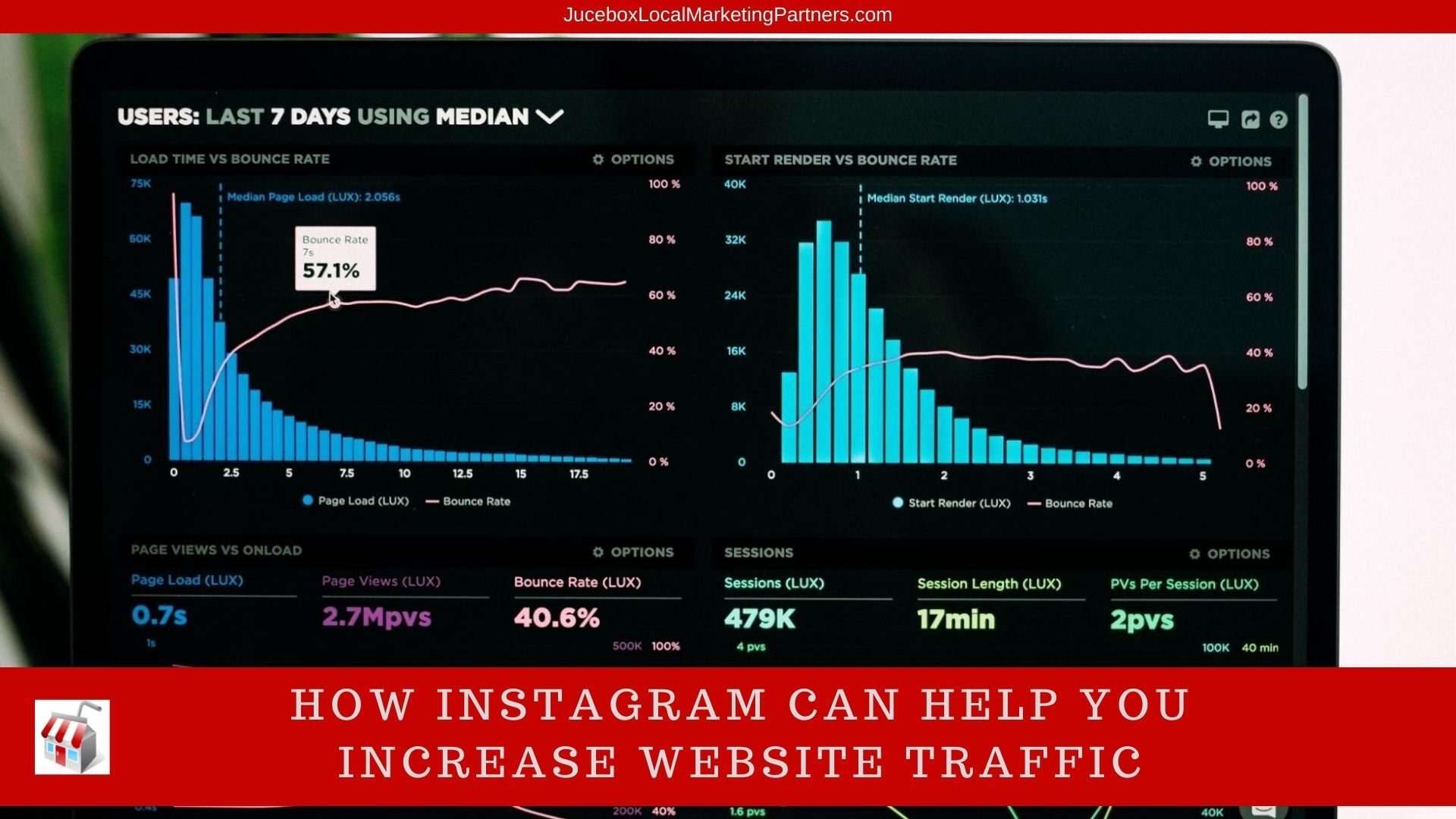The Latest News in Digital Marketing
Stay updated on the industry with digital marketing agency blog posts and ideas.
Jucebox Local Marketing Partners Blog

Jucebox Local Marketing Partners is thrilled to officially announce that we are a part of the UpCity community of top B2B service providers! At Jucebox Local Marketing Partners , we proudly specialize in helping home and professional services businesses improve their marketing efforts. Small businesses require a more strategic approach in order to stand out amongst the competition, and we help implement local SEO best practices to ensure success. Our team is the one-stop shop for those looking to maximize their visibility! UpCity is a resource that helps connect businesses to service providers they can trust. With more than 70,000 listed providers—from marketing agencies to accounting firms to HR consultants to IT specialists, and many more—2 million businesses (and counting) have visited UpCity to research and identify the best partner for their needs. UpCity’s proprietary algorithm utilizes a variety of digital signals to measure the credibility, trustworthiness, and recommendability of B2B service providers across the U.S. and Canada. These digital data points like reviews (both on UpCity and other third-party review sites), presence in relevant search results, domain authority, website speed, and experience help UpCity connect businesses with outstanding service providers like Jucebox Local Marketing Partners. We are proud to be listed in this vibrant and growing community and want to thank our clients for all of the love and support you have shown our business.

When you advertise your business on social media, it can take some real patience and time to get the number of interactions and followers you are looking for. Many entrepreneurs start out thinking they will have 100 followers in their first week, but unfortunately, it doesn’t usually go like that. Here is how you can get your social media followers buzzing about your business . Build Your Brand Ensure that you create a brand that people can associate with, follow and love. Target it directly at the people you want to become customers and followers. The trick is to use your branding as a continuous and stealthy advertisement for your business. It should exude what you stand for and remind people that you are in business ready to serve them. Your branding should appear on everything from your product packaging to your content posts and email bulletins. It does not stop with social media. When you follow the steps below, ensure your branding is integral to each and every one of them. Use your logo as your display picture and on content posts that you produce. You can use a logo maker, like logocreator.io , to design your logo and customize it to fit your business advertising model. Take stock of how your brand is working and the response it receives from customers and visitors to your pages or website. If you need to rebrand because it is failing to achieve results, then take the plunge and do so. Doing some research on how to brand effectively can go a long way, especially since there are so many ways to use branding on social media. Create Amazing Content Content that does not create a vibe or spark interest will let visitors know your business is still operating, but is almost pointless in terms of connecting people to your business. It can be so easy to get caught up in posting stock images or irrelevant memes to your page to cope with the hunger of the algorithms, but it will bore your audience. You want to satisfy the social bots and satisfy your customers each and every time you post content pieces. Take time to plan your business' content strategy and consider what you can produce or have produced for you, that will suit your business, your brand, and appeal to your audience. Be the refreshing business that makes people laugh or informs them of facts they’ve never heard before. Be the change on their newsfeed, the one business post that pops out and says ‘Read Me’. Involve Your Customers Email bulletins, face-to-face interactions and replies on review sites are all just as important as responding on social media. If you create a bond with a customer and make them feel special and needed, they are more likely to recommend your business. Let customers know about your social media and ask them to add you. It might be simple to put up a sign in your shop or to create a big button on your website. If you want to gain followers, you have to tell people about your social site. Consider how many businesses you use or buy from online and how many of those you follow on social media? Interact With Your Followers Communicating with customers is great but you have to also make sure that you are active and interactive on social media. This is a brilliant way to gain shares and comments on your posts, which will boost them and show them up on the newsfeeds of people who might not already be following you. If someone visits your social site and sees a page full of yourself and your followers chatting and sharing in conversation, they will want to be a part of it. Make Your Page an ‘Event’ Lastly, ensure that your content is full of competitions and fun, interactive possibilities. The more you make your site feel like a party where everyone can gain something the more you will build your following. When you create a buzz, the social media buzz will follow. Be the change you want to see in your business. Keep up that enthusiasm and dedication until you make a breakthrough.

A surefire way to drive more traffic is to create highly shareable content. When your content is interesting, funny, and informative, people will automatically share it with their friends or post it on social media. Not only that, but you are likely to get natural backlinks to your blog post from high-quality blogs, thus boosting your SEO rankings. This article will give you seven tips for creating shareable content. Let us get into it. 1. Find Out What Your Audience Truly Cares About The first step is finding out what your audience truly cares about. If you write content that is uninteresting or covers topics they don’t care about, they won’t read it, let alone share it. Fortunately, there are many ways to figure out what kind of content your audience reacts to. Google Analytics is your friend here, as is Google Search Console . Google Analytics will show you which pages people are spending the most time on. You will also be able to see things such as the bounce rate for different pages, which is an excellent indicator of audience interest. Google Search Console is also beneficial, as it can show data such as which pages rank the highest in the search engines and get the most click-throughs. Topics that get clicked on more by searchers and rank higher are probably more attractive to your audience. Of course, you can also ask your audience directly. You can publish a poll, either on your website or in your email newsletter, asking your readers what type of content they would like to see in the future. It can be a multiple-choice poll, or it can allow readers to write in their own ideas, in their own words. 2. Look For What Is Trending Follow the trend. Find out what is trending in your niche and write content related to that. Buzzsumo is an excellent tool to find out the top shared and top trending content related to any niche or keyword. Find out what kind of content people are reading and sharing so you can create similar content. Reddit is another great place to find trendy content ideas. Most niches will have at least one subreddit dedicated to that niche. Go to that subreddit and filter for “Hot” or “Top” posts. See what people are talking about, which issues concern consumers, and what kinds of questions people have. Quora is another excellent site. It's a Q&A site where people can ask questions and receive answers. It can be very revealing as to which things people are worried about or which topics they are curious about. Twitter can be helpful as well. Find trending hashtags or topics in your niche and write blog posts about them. You can use a tool like Hashtagify or RiteTag to discover trending hashtags in any industry, or you can simply look at the hashtags your competitors are using. 3. Write a Killer Headline Your headline is one of the most critical parts of your article. It must be eye-catching and exciting, and it should include an element of mystery, hinting at additional information being revealed throughout the piece. It should make people want to click on the article and scroll down to read more. You should consider creating an alternative headline for your meta title. That is the headline that will appear with your URL in the search engine results. Keep your meta title under 60 characters, or it may get cut off. 4. Prefer Long-Form Content Long-form content tends to rank best in the search engines. That’s not to say that shorter content can’t rank. In less competitive niches, or when published on authoritative blogs, shorter blog posts can and do rank well. However, as competition is getting more intense in almost every niche, shorter content is becoming less and less effective. The more your content ranks, the more traffic it will get, and the more people will share it. How much content is enough? In general, content in the top first position has 2,400+ words , on average, and all of the first six results have more than 2,300 words, on average. However, it’s not solely correlated with content length, as the first result, on average, has slightly fewer words than the second result. That shows that quality and site authority are paramount as well. It really depends on your industry at the end of the day. For example, if all the content in your industry is only 300 words long, you don’t necessarily need 2,400 words to get to the first position on Google. An SEO agency can figure out how many words you need for your niche. Shorter content is also less sharable. That’s because it often does not cover the topic in-depth and only superficially explains it. It lacks the ability to convey critical information or to reveal unique insights. 5. Break Down the Post Into Links A great way to make your content more shareable is to break it down and add links. Breaking up your content into subheadings is a great start. Most people skim through articles instead of reading them thoroughly, as they don’t always have a lot of time and are distracted by personal issues. Breaking up your content will allow readers to skim through the article and understand your message without spending as much time on the piece. If they know your message, they will be more likely to share it. You can also use links to break down the post. Links show that your statements are backed up by research, data, and studies. They also add a structure to the article when spread evenly throughout the piece. In addition, outbound links can improve your SEO rankings. Make sure you are linking to high-quality blogs, however. Inbound linking can also improve your rankings, but link to pages you want to rank higher. 6. Use Images Images also break up articles and make them easier to skim through. Not only that, but they make your content more exciting and interesting. They also make your content more shareable. A high-quality, eye-catching image will make people want to share your content with their friends or on social media. Remember that your main post image will show up on social media previews when shared, making those social media posts more likely to be reshared many times over. Don’t use free stock images. You might save a dollar or two on an image by using a free stock image from a site like Pixabay , but those images appear more times on the web than you might imagine. Also, they’re often lower-quality images that are kind of plain-looking and uninspirational. If you can’t hire a designer to create custom images, at least invest in premium stock photos that look better. When uploading images, make sure to use a plugin like WP Smush to compress the images before uploading them. Doing that will help speed up your site. Otherwise, the photos you upload can make your site load slowly, making it less user-friendly and less shareable. Also, when you upload your images, include your target keywords in the alt text. That doesn’t make your page more shareable directly, but it does increase your SEO rankings, leading to more traffic and shares in the long run. 7. Add Sharing Buttons That Are Easy to See Finally, add sharing buttons that are easy to see. There are many plugins that will add sharing buttons to your WordPress blog. AddThis allows you to add a variety of different sharing button styles to your page, such as: A floating sidebar that is always visible but doesn’t interfere with the reading experience A floating header or footer bar with a share button Inline sharing buttons that appear at a specific point in the blog post, either in the beginning, middle, or end Pop-ups with sharing buttons Share buttons in the corner of the page that only expand when hovered over, thus not interfering with the user experience Sharing buttons that appear when a user hovers their mouse over an image, allowing them to share the image with a link to your blog post AddThis allows you to customize the way your share buttons look. It also provides you with detailed analytics on how many people shared your posts and to which channels. I would suggest playing around with different share button styles to figure out which types bring the most shares. You may need to choose a more prominent style or a less prominent one if your share buttons are interfering with the user experience. ShareThis is another excellent plugin. Wrapping It Up It only takes one viral blog post to become famous. Sometimes, you’ll publish post after post without the type of engagement you dream of, only for one blog post to go viral on social media, giving your blog celebrity status. Ultimately, however, your goal should be to provide consistent, high-quality, shareable content and encourage readers to share your posts with as many friends as possible. Using these seven tips, you can make your content more shareable and get more organic traffic from referrals.








